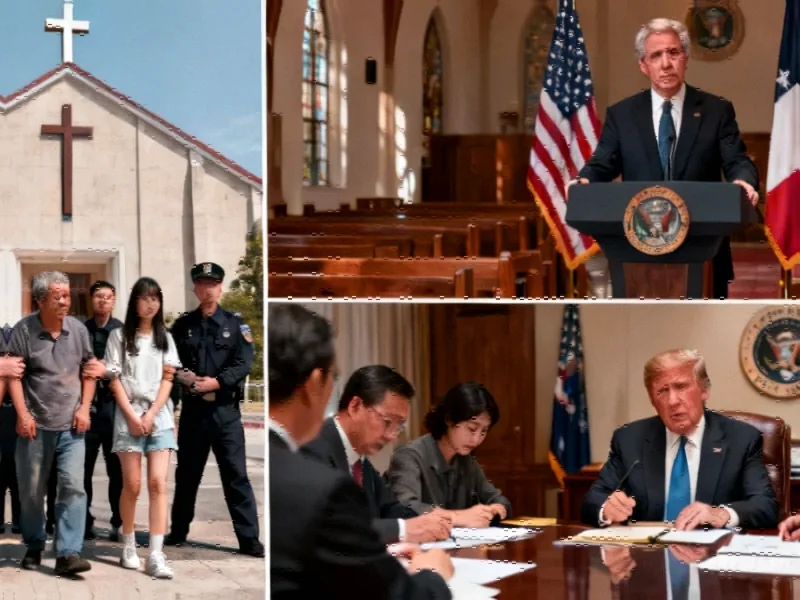Trump Sets Conditions to Avoid Escalating Tariff War
According to reports, President Donald Trump has outlined specific demands that Chinese officials must meet to avoid a potential 100% tariff hike on Chinese exports to the United States next month. Speaking to reporters aboard Air Force One, the president stated he wants China to purchase American soybeans and cease fentanyl-related activities, while also expressing concerns about rare earth minerals becoming a bargaining chip in trade discussions.
“I want to help China, I’m not going to hurt China, but they have to give us things,” Trump reportedly explained. “I want them to buy soybeans, one of the things I want is China’s going to buy soybeans. I want China to stop with the fentanyl, very normal things.”
Economic Impact of Current Tariff Structure
Analysts suggest the current tariff arrangement has generated approximately $350 billion annually for the U.S. government. However, economists remain divided on whether foreign businesses are absorbing these costs or passing them along to American consumers, with data indicating most businesses plan to transfer the expenses to customers.
The president framed the situation as mutually beneficial, stating: “They’re paying us a lot of money—tremendous amounts of money in tariffs—and they’d probably like it to be less and we’ll work on that, but they have to give us some things.” He emphasized that the relationship is “no longer a one-way street” in terms of trade concessions.
China’s Defiant Stance and Economic Resilience
Sources indicate Beijing has maintained a firm position throughout negotiations, with a Ministry of Commerce spokesman stating last week that “frequently threatening high tariffs is not the right approach to engaging with China.” Officials emphasized that while China does not want a tariff war, the nation is not afraid of one either.
China’s negotiating position appears strengthened by recent economic data showing unexpected resilience. According to the National Bureau of Statistics, China’s economy grew by 5.2% year-on-year in the first three quarters of 2024, exceeding many forecasts. Third-quarter growth of 4.8% represented a slowdown but still surpassed expectations, with the report describing the national economy as demonstrating “strong resilience and vitality.”
Trade Diversification Strategy Shows Results
While President Trump previously claimed China faced “tremendous difficulties” due to U.S. tariffs, data suggests Beijing has successfully diversified its export markets. Customs administration figures show China’s shipments to the U.S. fell 27% in September, marking the sixth consecutive month of double-digit declines to its former most valuable customer.
However, strong growth to alternative markets like the European Union resulted in export growth to non-U.S. countries of 14.8%. This strategic shift contributed to an overall 8.3% increase in exports for September compared to the previous year, reaching $328.6 billion—the highest monthly total for 2025 so far.
Comparative Economic Performance
The United States reported contrasting economic performance, with second-quarter GDP growth of 3.8% following a contraction in the first quarter. Despite measuring smaller overall growth rates, the U.S. maintains significant economic advantage in per capita terms, with GDP per capita nearing $86,000 compared to China’s approximately $13,000.
Industry observers note that trade negotiations between the world’s two largest economies remain complex, with both sides possessing significant leverage. China maintains control over rare earth minerals essential for many technological applications, while the U.S. represents a massive consumer market that Chinese exporters have historically relied upon.
Broader Implications and Future Outlook
As the deadline for the tariff pause approaches, analysts suggest the stronger-than-expected performance of China’s economy may impact negotiating dynamics. The diversification of China’s export markets appears to have reduced its vulnerability to U.S. trade pressure, potentially altering the balance of power in upcoming discussions.
Meanwhile, developments in enterprise AI technology and healthcare innovations continue to shape global economic trends. The ongoing trade tensions occur alongside significant cloud infrastructure developments that affect international business operations.
According to Chinese media reports, Beijing remains committed to protecting its economic interests while seeking constructive solutions to trade disputes. The situation continues to evolve as both nations assess their strategic positions ahead of next month’s deadline, with the potential for significant implications for global agricultural markets and pharmaceutical trade.
This article aggregates information from publicly available sources. All trademarks and copyrights belong to their respective owners.
Note: Featured image is for illustrative purposes only and does not represent any specific product, service, or entity mentioned in this article.



